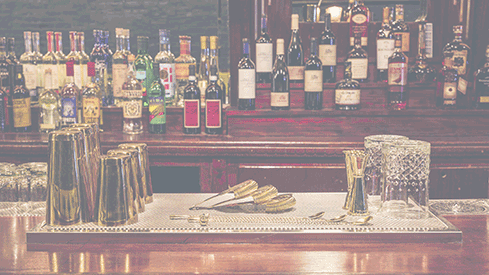USS FORRESTAL (CV-59) was the first ever Super Carrier, commissioned in 1955. Named for the first Secretary of Defense, James Forrestal, she was a conventionally powered aircraft carrier constructed at Newport News Shipbuilding in Virginia. Forrestal was built from the keel up with an angled flight deck for recovery operations, another first. At over 81,000 tons displacement, 1067 feet length overall and drawing 37 feet, she was the largest carrier constructed by the U.S. at that time. Forrestal was capable of carrying 75-80 combat naval aircraft of various types, and she was operated by a crew of 5,000 Sailors. Manned and equipped for sustained flight operations at sea for several months at a time, USS Forrestal arguably was the most advanced, complex and capable warship on the seas.

Originally stationed at Norfolk Naval Operating Base, Forrestal routinely deployed to the Mediterranean Sea with U.S. Sixth Fleet in the late 50’s and early 60’s. In 1963, she made history as the first (and only) aircraft carrier to support afloat operations of a C-130 cargo plane.
By 1967, the ongoing conflict in Vietnam required Forrestal’s services, and she deployed to the Western Pacific to support U.S. operations in the region. In late July, Attack Carrier Air Wing Seventeen began conducting regular strikes from the Gulf of Tonkin against targets in North Vietnam from Forrestal’s deck. The pilots and crew, after four days of missions, were beginning to settle into the ‘routine’ of combat operations; however a series of events caused a catastrophe so large, every U.S. Navy sailor from then through now learns about it.
29 Jul 1967 – 1051 – Two A-4 Skyhawks line up on the ships catapults to launch for a daytime bomb strike. Meanwhile, weapons crews are arming Zuni rocket pods for a flight of F-4 Phantoms on the starboard (right) fantail of the ship. The Phantoms are slated to fly Triple A suppression for the Skyhawks. Meanwhile, directly across the deck from the Phantoms, several more Skyhawks are starting engines. Each of the jets is fully fueled, and loaded with two, conventional, 1000 lb. bombs.
1051:21 – An F-4 shifts from ground electrical power to aircraft generators and stray voltage in the Phantom’s weapon systems inadvertently launches a live Zuni rocket across the flight deck. The rocket smashes into a Skyhawk and explodes on impact. The burning jet begins leaking fuel across the flight deck and under the adjacent aircraft; the fuel immediately catches fire.
1052 – Skyhawk pilots struggle to escape their aircraft and the conflagration surrounding them. Flight deck firefighters from Damage Control Team 8 rush toward the aircraft with large fire suppression bottles trying to keep the flames away from the jets.
1052:55 – Only 94 seconds after the initial explosion, the fuel and weapons from one of the A-4s ‘cooks off’ causing an enormous explosion that rocks the ship. The blast kills the senior firefighter on the flight deck, Chief Petty Officer Gerald Farrier, and most of Damage Control Team 8. Forrestal is on fire and in serious trouble.
1053:04 – A second A-4 Skyhawk explodes on the port (left) fantail of Forrestal. This blast is more powerful than the first, and tears an enormous whole through the ship’s armor plated deck. The fire begins to rage out of control and move below deck into crew living and work spaces.
1055:20 – A third explosion knocks crewmembers off their feet on the flight deck.
1056-1057 – A series of four more explosions rip the aft portion of Forrestal’s flight deck apart. Less than six minutes have elapsed and the ship is in serious danger of sinking. The ship goes to general quarters, and Sailors begin closing all watertight hatches throughout the ship to prevent the fire from spreading and to contain flooding. The crew is in for a long fight for their ship, their home and their lives.

Over the subsequent 17 hours Sailors and Marines aboard struggled to put out the fires caused by the flight deck mishap. Although the flight deck fires were under control by noon, the below-deck fires continued to burn and flare up throughout the day and night. USS Rupertus (DD-851) maneuvered alongside the burning carrier and directed her own firehoses at the flames to assist. Meanwhile the ship’s medical staff attempted to move injured Sailors and Marines to safety and treat them for burns, smoke inhalation, and more serious injuries. Engineers on the ship began pumping massinve amounts of fuel to counter the ship’s growing list from the firefighting water. The following day, USS Forrestal began limping its way toward Cubi Point in the Philippines to undergo seaworthiness repairs enabling her to return to Norfolk.
In the end, 134 men died and another 161 were injured. 21 aircraft suffered such severe damage they were either pushed over board during the firefighting or subsequently stricken from the naval inventory. The disaster was the result of several issues lining up like holes in Swiss cheese. From the use of old weapons, to shortcuts in arming weapons, to misuse of firefighting methods, several seemingly minor issues compounded their effects ending in tragedy. The Navy has applied numerous lessons learned and developed multiple safety systems to prevent another Forrestal. Her memory is forever burned into the collective unconscious of every U.S. Sailor.
So tonight when I pop open a cold ‘barley pop’ and “drink to the foam”, I do so in honor of the brave men of USS Forrestal who risked and/or gave their lives to save their ship and their shipmates.
Honor. Courage. Commitment.
